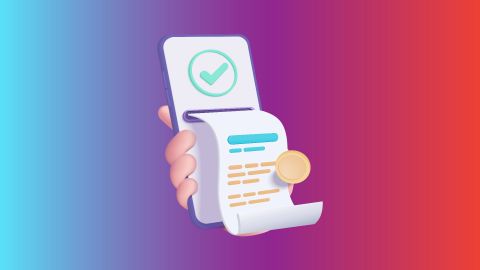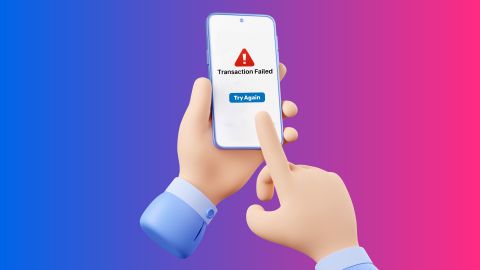Improve your Wi-Fi experience by understanding signal strength metrics. Learn how to troubleshoot weak signals and boost performance for seamless browsing and streaming.
What is a Wi-fi signal
-
-
Wi-Fi signal strength is a crucial factor that determines the quality and reliability of your wireless internet connection. It refers to the power level of the signal transmitted from a Wi-Fi router to a device, such as a smartphone or laptop. A strong Wi-Fi signal ensures faster data transfer rates, reduced latency, and a more stable connection, which is essential for activities like streaming, gaming, and video conferencing. Conversely, weak signals can lead to slow internet speeds, frequent disconnections, and an overall frustrating user experience.
Understanding Wi-Fi signal strength is vital for optimising your home or office network setup. Additionally, services like Bajaj Pay can enhance your online transactions while ensuring that you have a reliable internet connection for tasks such as broadband bill payments.What affects Wi-fi signal strength
- Distance from router: The farther you are from the router, the weaker the signal.
- Obstacles: Walls, furniture, and appliances can block or weaken Wi-Fi signals.
- Interference: Other electronic devices (microwaves, cordless phones) can disrupt signals.
- Router quality: The type and specifications of the router influence signal strength.
- Network congestion: Multiple devices using the same network can reduce available bandwidth.
- Frequency band: 2.4 GHz signals cover larger areas but are slower; 5 GHz offers faster speeds but shorter range.
Units of measurement: mW, RSSI, and dBm
Wi-Fi signal strength is measured using various units that help quantify the power of the signal:- mW (Milliwatts): This unit measures the actual power output of the Wi-Fi signal. Higher mW values indicate stronger signals.
- RSSI (Received Signal Strength Indicator): This is a relative measure of the power level received by a device. It is usually expressed in dBm and helps determine how well a device can communicate with the router.
- dBm (Decibels relative to one milliwatt): This logarithmic unit measures signal strength. A higher dBm value indicates a stronger signal. For example, -30 dBm represents an excellent signal, while -90 dBm indicates a weak connection.
Understanding dBm and its logarithmic scale
The dBm scale is logarithmic, meaning each step represents a tenfold increase or decrease in power. For instance:
1. A change from -30 dBm to -40 dBm indicates a tenfold decrease in power.
2. The scale typically ranges from -30 dBm (excellent) to -90 dBm (poor).
This logarithmic nature allows for easier comparisons of signal strengths. For example, while -50 dBm might seem close to -60 dBm numerically, it actually represents significantly better performance in terms of connectivity and speed. Understanding this scale is essential for troubleshooting Wi-Fi issues and optimising network setups.Ideal Wi-fi signal strength for different uses
Signal strength (dBm) Application -30 to -50 Excellent for HD streaming -50 to -60 Good for gaming and video calls -60 to -70 Fair for browsing and emails -70 to -80 Poor; may experience interruptions Below -80 Unusable; frequent disconnections
To measure Wi-Fi signal strength effectively:
How to measure and track Wi-fi signal strength
1. Use built-in tools: Most devices have built-in network settings that display signal strength in dBm or bars.
2. Wi-fi analyser apps: Download apps like NetSpot or WiFi Analyser to visualise signal strength across different areas.
3. Router interface: Access your router's admin panel via its IP address to view connected devices and their respective signal strengths.
4. Visual aids: Create heat maps using specialised software to identify weak spots in your coverage area.
Tracking these metrics helps optimise your network setup for better performance.Common Wi-fi signal strength issues
- Weak signals in certain areas: Some rooms may have poor coverage due to distance or obstacles.
- Frequent disconnections: Users may experience drops in connectivity due to interference or congestion.
- Slow speeds: Inadequate bandwidth can lead to sluggish performance during high-demand activities.
- Inconsistent performance: Fluctuating speeds can be caused by network congestion or router placement.
How to improve Wi-fi signal strength
- Relocate your router: Place it in a central location away from walls and obstructions.
- Use range extenders: Install extenders or mesh systems to boost coverage in larger areas.
- Change channels: Switch to less congested channels through your router settings.
- Upgrade your router: Invest in a newer model with better range and capabilities.
- Limit connected devices: Disconnect unused devices that may be consuming bandwidth.
Common Wi-fi signal strength mistakes to avoid
- Ignoring router placement: Not considering optimal placement can lead to weak signals.
- Using outdated equipment: Continuing with old routers can limit performance capabilities.
- Neglecting firmware updates: Failing to update router firmware can cause security vulnerabilities and performance issues.
Steps to pay your broadband bill online on the Bajaj Finserv website
Paying the broadband bill through the Bajaj Finserv website is simple. Here are the steps:1. Visit the Bajaj Finserv website
2. Navigate to ‘ALL PAYMENTS’ under the ‘PAYMENTS’ section and click on it
3. Select the ‘BROADBAND POSTPAID’ option from under ‘BILLS & RECHARGES’
4. A pop-up will request for sign-in, enter your mobile number and click on ‘GET OTP’ to login
5. Select your service provider from the list of broadband service providers
6. Enter your ‘CUSTOMER ID’ and click on ‘FETCH YOUR BILL’
7. Verify the bill amount and click on ‘PAY NOW’
8. Pay using the multiple payment methods available such as Bajaj Pay UPI, debit card, credit card, net banking, and Bajaj Pay Wallet.
Post the transaction you will be receiving a confirmation to intimate about successful payment.Fees and charges
A convenience fee of up to 2% will be charged depending on the transaction amount and payment mode (inclusive of applicable taxes). For more information on fees and charges, click here.Note: For failed transactions, the total amount including charges except taxes are reversed.
-
Recharge and Pay Bills
Mobile Prepaid
Mobile Postpaid
Broadband Bill Payment
Electricity Bill Payment
Bajaj Finserv App for All Your Financial Needs and Goals
Trusted by 50 million+ customers in India, Bajaj Finserv App is a one-stop solution for all your financial needs and goals.
You can use the Bajaj Finserv App to:
Apply for loans online, such as Instant Personal Loan, Home Loan, Business Loan, Gold Loan, and more.
Explore and apply for co-branded credit cards online.
Invest in fixed deposits and mutual funds on the app.
Choose from multiple insurance for your health, motor and even pocket insurance, from various insurance providers.
Pay and manage your bills and recharges using the BBPS platform. Use Bajaj Pay and Bajaj Wallet for quick and simple money transfers and transactions.
Apply for Insta EMI Card and get a pre-approved limit on the app. Explore over 1 million products on the app that can be purchased from a partner store on Easy EMIs.
Shop from over 100+ brand partners that offer a diverse range of products and services.
Use specialised tools like EMI calculators, SIP Calculators
Check your credit score, download loan statements and even get quick customer support—all on the app.
Download the Bajaj Finserv App today and experience the convenience of managing your finances on one app.
You can use the Bajaj Finserv App to:
Apply for loans online, such as Instant Personal Loan, Home Loan, Business Loan, Gold Loan, and more.
Explore and apply for co-branded credit cards online.
Invest in fixed deposits and mutual funds on the app.
Choose from multiple insurance for your health, motor and even pocket insurance, from various insurance providers.
Pay and manage your bills and recharges using the BBPS platform. Use Bajaj Pay and Bajaj Wallet for quick and simple money transfers and transactions.
Apply for Insta EMI Card and get a pre-approved limit on the app. Explore over 1 million products on the app that can be purchased from a partner store on Easy EMIs.
Shop from over 100+ brand partners that offer a diverse range of products and services.
Use specialised tools like EMI calculators, SIP Calculators
Check your credit score, download loan statements and even get quick customer support—all on the app.
Download the Bajaj Finserv App today and experience the convenience of managing your finances on one app.
Frequently asked questions
What is the best Wi-Fi signal strength for streaming video?
For smooth video streaming, a Wi-Fi signal strength of at least -67 dBm is recommended. This ensures a stable connection and sufficient bandwidth for HD and 4K streaming.
How can I improve my Wi-Fi signal strength at home?
To improve Wi-Fi signal strength, place your router in a central location, away from walls or obstructions. Use dual-band or mesh Wi-Fi systems, ensure your router firmware is updated, and consider Wi-Fi extenders or repeaters for larger areas.
What does dBm mean in Wi-Fi signal measurement?
dBm (decibels relative to 1 milliwatt) measures Wi-Fi signal strength. It is expressed in negative numbers; closer to 0 indicates a stronger signal (e.g., -30 dBm is excellent, while -90 dBm is weak).
Why is my Wi-Fi slower during peak hours?
Wi-Fi speed can decrease during peak hours due to network congestion. Multiple users accessing the same internet service provider (ISP) network at once can reduce available bandwidth.
How can I secure my home Wi-Fi network?
Secure your home Wi-Fi by setting a strong, unique password, enabling WPA3 or WPA2 encryption, disabling WPS, hiding your network SSID, and keeping your router firmware up to date.
Show More
Show Less




